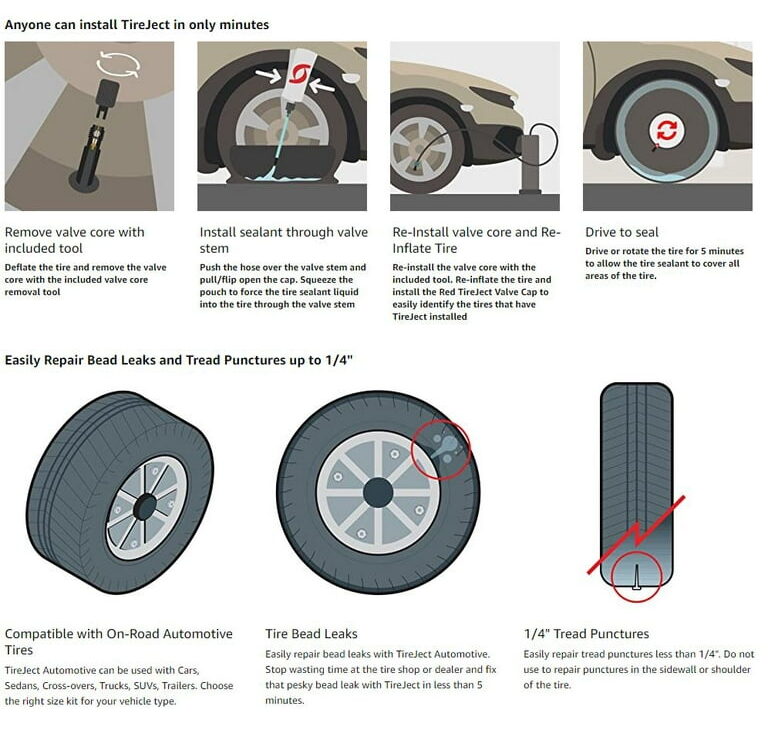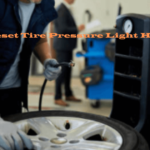How to fill a tire with air, locate the valve stem, and remove the valve cap. Use a tire pressure gauge to check the current tire pressure.
Properly inflating your tires is essential for safe driving and fuel efficiency. As a simple yet crucial maintenance task, knowing how to fill a tire with air can save you time and money in the long run.
By following a few easy steps, you can ensure that your tires are properly inflated and your vehicle is performing at its best.
In this guide, we will cover the basics of filling a tire with air, including the necessary tools and techniques to get the job done efficiently.
So, let’s dive in and learn how to keep your tires properly inflated for a smoother driving experience.
The Importance Of Properly Inflated Tires
Properly inflating your tires is crucial for the safety, longevity, and efficiency of your vehicle. Maintaining the right tire pressure ensures optimal performance while driving saves fuel, and reduces the risk of accidents due to underinflated or overinflated tires.
Safety On The Road
Inflating tires to the correct pressure level improves traction, handling, and braking, reducing the likelihood of accidents.
Improving Fuel Efficiency
Properly inflated tires reduce rolling resistance, leading to improved fuel efficiency and lower carbon emissions.
Identifying A Flat Tire
Visual Inspection
Start by visually inspecting the tires for any signs of deflation such as flattening, visible punctures, or bulges.
Using A Tire Pressure Gauge
Insert the tire pressure gauge into the valve stem to measure the air pressure in the tire accurately.
Getting Ready To Fill Your Tire With Air
Before filling your tire with air, it’s crucial to know the correct tire pressure. The proper tire pressure for your vehicle can usually be found on a sticker inside the driver’s side door jamb or in the owner’s manual.
Once you have the correct tire pressure, it’s time to prepare the air compressor. First, check the air compressor’s pressure gauge to ensure it’s set to the recommended pressure for your tire.
After that, inspect the air hose and connectors for any damage or leaks. It’s important to securely attach the air hose to the tire valve stem and double-check the connection for a tight fit.

Credit: www.ebay.com
Filling Your Tire With Air
If you find that your tire pressure is low, it’s important to fill it with air to ensure safe and efficient driving. In this section, we’ll cover the steps involved in filling your tire with air using an air compressor. It’s a straightforward process that you can easily do on your own. Let’s get started!
Using The Air Compressor
When it comes to filling your tire with air, an air compressor can be a handy tool. Here’s how you can use it:
- Begin by positioning your vehicle near an air compressor, ensuring that the hose can reach all four tires. It’s important to park on a level surface and engage the parking brake for safety.
- Locate the valve stem on the tire you want to fill. The valve stem has a small cap that you can unscrew with your fingers.
- Remove the cap from the valve stem and set it aside. It’s a good idea to keep it in a safe place to prevent loss.
- Attach the air hose nozzle to the valve stem securely. You should hear a slight hissing sound as the air begins to fill the tire.
- Next, turn on the air compressor. To avoid any mishaps, ensure that the pressure gauge is set correctly.
- Monitor the tire pressure as you fill the tire with air. It’s important not to overinflate the tire, as this can lead to poor handling and decreased tire lifespan.
- Periodically check the gauge to ensure you’ve reached the desired tire pressure. If necessary, add or release air accordingly.
- Once you’ve reached the appropriate tire pressure, you can remove the air hose nozzle from the valve stem. Make sure to secure the valve stem cap back in place to prevent dust and debris from entering.
- Repeat this process for each tire that requires filling, and always double-check the tire pressure after filling to ensure it meets the recommended level.
Checking The Tire Pressure
Before filling your tire with air, it’s essential to check the current tire pressure. Here’s what you need to do:
- First, locate a tire pressure gauge. These small handheld tools are readily available at most gas stations and automotive stores. Ensure that the gauge is in good working condition.
- Unscrew the valve stem cap from the tire you want to check and keep it in a safe place.
- Press the gauge firmly onto the valve stem to get an accurate reading. You should hear a brief hissing sound as the gauge reads the pressure.
- The gauge will display the current tire pressure measurement. Compare this reading to the recommended tire pressure listed in your vehicle’s manual or on the sticker located on the driver’s door jamb.
- If the tire pressure is too low, it’s time to fill the tire with air using the steps we discussed earlier. If it’s too high, you may need to release some air using a small tool or the tip of a pen.
- Once you’ve adjusted the tire pressure as needed, replace the valve stem cap securely to protect the valve from debris and maintain the correct tire pressure.
Ensuring Proper Tire Inflation
Proper tire inflation is critical for the overall performance and safety of your vehicle. When your tires are inflated correctly, they provide better handling, improved fuel efficiency, and an extended tire lifespan.
In this section, we will discuss how to test for leaks and recheck tire pressure to ensure your tires are properly inflated.
Testing For Leaks
Before filling your tire with air, it’s essential to check for any leaks. Here’s how you can do it:
- Inspect the tire visually for any obvious punctures, cracks, or damage.
- If you suspect a leak but can’t find it visually, you can use the soap and water method. Mix dish soap with water and apply it to the tire’s surface.
- Observe for any bubbles or fizzing, which indicates a leak. Concentrate on the valve stem, tread area, and sidewall.
Rechecking Tire Pressure
Once you have filled your tire with air, it’s crucial to recheck the tire pressure to ensure it is at the recommended level. Follow these steps:
- Use a tire pressure gauge to measure the pressure of each tire. Insert the gauge into the valve stem, making sure it is securely seated.
- Read the pressure measurement on the gauge, which should ideally match the manufacturer’s recommended PSI (pounds per square inch).
- If the pressure is too low, slowly add air while periodically checking the pressure with the gauge. If it is too high, release some air until it reaches the proper level.
- After adjusting the tire pressure, recheck all the tires to ensure consistency.

Credit: www.homedepot.com

Credit: www.amazon.com
Frequently Asked Questions Of How To Fill A Tire With Air
How Do You Fill A Tire With Air?
To fill a tire with air, first remove the valve cap from the tire. Then, attach the air hose to the valve, making sure it is securely connected. Activate the air pump and inflate the tire to the recommended pressure.
Once the tire is filled, remove the hose, replace the valve cap, and check the pressure using a tire gauge.
Can I Fill My Tires With Any Type Of Air?
No, it is important to fill your tires with the type of air recommended by the manufacturer. Typically, this is regular compressed air.
Avoid using a different type of gas or any flammable substances, as this could damage your tires and affect their performance and safety.
How Often Should I Check My Tire Pressure?
To ensure optimal tire performance, it is recommended to check your tire pressure at least once a month.
Additionally, it is important to check the pressure before long trips, after extreme temperature changes, and after the tires have been stationary for a while.
Proper tire pressure improves fuel efficiency, handling, and prolongs tire life.
Conclusion
Filling a tire with air is a simple yet essential task for vehicle maintenance. By following these easy steps, you can ensure that your tires are properly inflated, which leads to better fuel efficiency and improved performance.
Regularly checking and filling your tires with air can also extend their lifespan, saving you money in the long run. Keep your tires properly inflated and stay safe on the road.

Sudatta is a passionate automotive enthusiast and expert in the field. With a keen eye for detail and a love for all things automotive, he shares insightful articles and reviews to ignite the automotive passion in readers.




